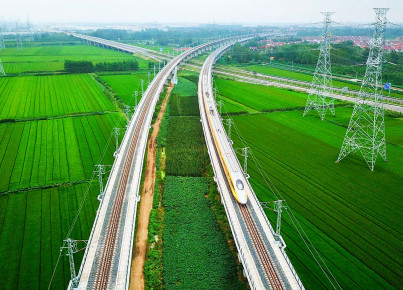By Dmitrii Klementev
An ongoing competition between China and the United States, definitely, provides a unique window of opportunity but also exacerbates the fragmented nature of the region
Southeast Asia, comprising 10 member states of the Association of the Southeast Asian Nations, has recently become one of the most dynamically growing regions in the world. To a large extent, the members of the Association owe their success to trade and an increased flow of foreign direct investments (FDIs). In turn, the economic success of the integration has reshaped the existing global value chains and attracted considerable attention from the leading actors in world politics. Traditionally, the US and China open the list of the most engaged state actors in Southeast Asia, followed by South Korea and Japan, usually referred to as the US allies. This article aims to examine the motives of the main actors’ investment policies in Southeast Asia as well as their consequences for the future of regional integration.
At the turn of the 21st century, since the Soviet Union had collapsed and the Cold war had been over, the rise of China became one of the key factors which radically changed the role of Southeast Asia in the global system of struggle for power. In 1999 China launched its “Go out” policy with the overall goal to promote the competitiveness of Chinese business abroad. In 2013, the Belt and Road initiative was set up to raise investments in the regional infrastructure. In order to finance the projects, implemented in the framework of the initiative, the Asian Infrastructure Bank was established. Moreover, the Maritime Silk Road, an integral part of the Belt and Road initiative, was put in place passing through Southeast Asia and particularly through the Strait of Malacca. The Strait remains of vital importance for the Chinese energy security as long as about 80% of the country’s crude oil imports come through it1. In 2020, China and ASEAN alongside some other states of the region signed the Regional Comprehensive Economic Partnership, which also included an Investment Chapter.
Despite the fact that China has been unable to become the leading investor in Southeast Asia so far (in 2019 Chinese share in the regional FDI inflows accounted for less than 7%2), this activity was enough to raise concerns among the US and its allies. Traditionally, the return of the US to Southeast Asia is associated with the Obama administration. At that time, the American share of FDI in ASEAN was the third largest one coming after the EU and Japan3. However, by 2019 the country managed to become the most important foreign investor in the region with a total share of 15.2%4. Unlike its competitor, the US invests mainly in the manufacturing sector (Table 2), considering the region as a “production platform”. Some of the US allies stick to the same approach. For instance, South Korea also integrates ASEAN countries in its value chains through investments.
Until recently China itself, was the first destination for the US FDI. A major redirection of the American FDI from China to ASEAN occurred as a result of the US-China trade war. In 2018, reciprocal tariffs introduced by Beijing entailed higher production costs for American companies in China. After a new round of tensions, the US business resorted to different sourcing policies investing in alternative manufacturing facilities in the countries with lower production costs. For instance, the US invested in such countries as Indonesia, Cambodia, Vietnam and the Philippines. Later on, this practice was officially called the “China plus One” strategy.
Thus, one can conclude that a real struggle for influence in Southeast Asia has begun among the leading economic powers in the world and FDIs constitute the main weapon of it. Nevertheless, as it was emphasized above, until recently, ASEAN countries have managed to use this struggle and the incoming investments as a stimulus of their economic growth. However, the question is whether all ASEAN member states benefit equally from FDIs and how these investments might affect the future of the integration in Southeast Asia?
It is important to delineate the nature of ASEAN as an integration body as such. Despite significant economic success the Association consists of countries, which differ greatly in the level of their development. For example, on the one hand, its ranks include Singapore with GDP per capita which amounts to 59,797.8 US$. On the other hand, there is Myanmar with GDP per capita being equal to 1,400.2 US$ (Table 1). As a result, there are countries (more developed: Singapore, Brunei, Malaysia, Thailand, the Philippines, Indonesia) which are benefiting more from FDI inflows and those which are considered as less attractive for investors. More investments also contribute to unequal economic growth rates of the countries, exacerbating the existing differences within the integration. In addition to it, ASEAN members have different historical and cultural backgrounds. With no doubts, all these factors do not play in favor of the Association.
To conclude, in the current situation ASEAN countries find themselves caught between Scylla and Charybdis like the mythical hero from Homer’s “Odyssey”. An ongoing competition between China and the United States, definitely, provides a unique window of opportunity but also exacerbates the fragmented nature of the region. A potential solution for ASEAN would be to strengthen its coordination of investment policies at the integration level, so that all its members could benefit from it more or less equally.
1 https://www.degruyter.com/document/doi/10.1515/asia-2017-0049/html
2 https://www.aseanstats.org/wp-content/uploads/2020/11/ASEAN_Key_Figures_2020.pdf
3 https://www.aseanstats.org/wp-content/uploads/2020/11/ASEAN_Key_Figures_2020.pdf
4 https://www.aseanstats.org/wp-content/uploads/2020/11/ASEAN_Key_Figures_2020.pdf






